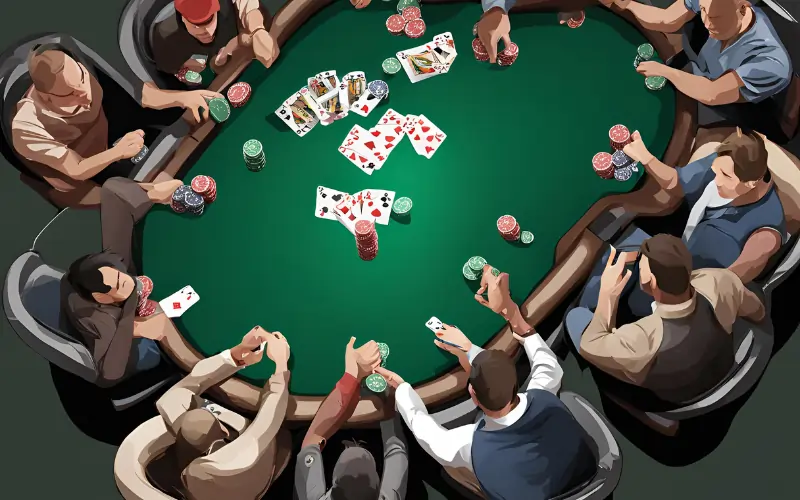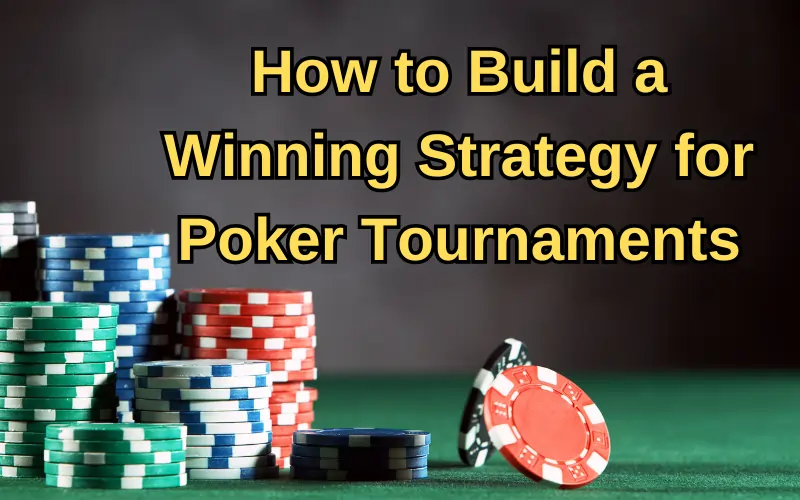Poker Tournaments offer a thrilling and competitive environment for players to showcase their skills, outwit opponents, and potentially win big. However, success in Poker Tournaments requires more than just a love for the game; it demands a well-thought-out strategy, adaptability, and a deep understanding of poker fundamentals. Whether you’re a seasoned player or new to the tournament scene, this guide will help you build a winning strategy that can increase your chances of coming out on top.
Understand the Tournament Structure
Before you can develop a winning strategy, it’s crucial to understand the structure of the Poker Tournaments you’re entering. Different Poker Tournaments have different formats, and your approach should vary accordingly.
Key Aspects to Consider:
- Blind Levels: Tournaments feature increasing blind levels, which require players to make larger bets as the game progresses. Knowing when the blinds increase can help you plan your moves and manage your stack effectively.
- Starting Stack: Your starting stack size can influence your early-game strategy. A larger stack gives you more flexibility, while a smaller stack might require a more conservative approach.
- Payout Structure: Understanding how the prize pool is distributed can help you decide when to play aggressively and when to play conservatively. For example, in some tournaments, the top-heavy payouts might encourage you to take more risks to reach the final table.
By familiarizing yourself with the tournament structure, you can tailor your strategy to suit the specific conditions of the Poker Tournaments.
Play Tight in the Early Stages
In the early stages of a Poker Tournaments, it’s generally wise to play tight and avoid unnecessary risks. At this point, the blinds are low, and there’s no need to jeopardize your stack with marginal hands.
Why Tight Play Works Early On:
- Preserve Your Stack: By playing fewer hands and only entering the pot with strong hands, you preserve your chips for later stages when the blinds are higher, and the competition is tougher.
- Gather Information: The early stages give you an opportunity to observe your opponents’ playing styles. Take note of who plays aggressively, who bluffs often, and who plays passively. This information will be valuable later in the Poker Tournaments.
- Avoid Traps: Early in the tournament, many players take unnecessary risks, hoping to build a big stack quickly. By playing tight, you avoid falling into traps and getting caught in large pots with weak hands.
Tight play in the early stages sets a solid foundation for the rest of the Poker Tournaments, allowing you to enter the mid-game with a healthy stack and a clear understanding of your opponents.
Adjust Your Strategy in the Mid-Game
As the Poker Tournaments progresses and the blinds increase, you’ll need to adjust your strategy to stay competitive. The mid-game is where many players start to feel the pressure of the rising blinds, and this is where your adaptability becomes crucial.
Mid-Game Strategies:
- Open Up Your Range: As the blinds rise, you’ll need to open up your hand range slightly. This means playing more hands and taking calculated risks to steal blinds and build your stack. However, don’t overdo it—stay selective and avoid getting involved in too many marginal spots.
- Target Weaker Players: By this stage, you should have a good sense of who the weaker players at the table are. Target these players by applying pressure when they’re in the blinds or when they’ve shown a tendency to fold to aggression.
- Watch Stack Sizes: Pay attention to the stack sizes of your opponents. If a player has a short stack, they might be desperate to double up, making them more likely to push all-in with a wider range of hands. On the other hand, players with big stacks may try to aggressively take over the table.
In the mid-game, the key is to remain flexible and take advantage of the opportunities that arise as the dynamics of the Poker Tournaments change.
Master the Art of Bluffing
Bluffing is an essential part of any poker strategy, but in a Poker Tournaments, it’s particularly important. A well-timed bluff can help you steal pots and keep your opponents guessing, but it’s important to use this tactic wisely.
Effective Bluffing Tips:
- Pick the Right Spots: Bluffing works best when you have a believable story. For example, if the board shows a potential straight or flush, and you’ve been playing tight, a bluff might convince your opponent that you have the nuts.
- Bluff Against the Right Players: Some players are more likely to fold to a bluff than others. Target players who have shown a tendency to fold to aggression, and avoid bluffing against calling stations who never seem to fold.
- Don’t Overdo It: Bluffing too often can backfire, especially if your opponents catch on. Use bluffs sparingly, and mix them in with your value bets to keep your opponents off-balance.
Mastering the art of bluffing will give you a powerful tool to use in critical moments of the Poker Tournaments, but remember that it should be just one part of a well-rounded strategy.
Stay Aware of Position
Position is one of the most important factors in poker, and its significance is magnified in a Poker Tournaments setting. Playing from a strong position allows you to control the flow of the hand and make more informed decisions.
Why Position Matters:
- More Information: When you act later in a hand, you have more information about what your opponents are doing. This allows you to make more informed decisions about whether to bet, call, raise, or fold.
- Pot Control: Being in position gives you the ability to control the size of the pot. You can keep the pot small when you’re uncertain about your hand or inflate it when you’re confident.
- Bluffing Opportunities: Bluffing is more effective from a late position because you can see how your opponents have acted before deciding to bluff. This allows you to pick better spots for your bluffs.
Always know where you stand at the table and change how you play based on that. Playing aggressively from a strong position can be a key component of your winning strategy in Poker Tournaments.
Navigate the Bubble with Care
The bubble is the place in the tournament where the next player eliminated won’t be making any money, while everyone else will. This is a crucial phase of the Poker Tournaments, as players often tighten up, not wanting to bust out before the money.
Bubble Strategy Tips:
- Apply Pressure: Many players will be playing conservatively during the bubble, hoping to make it into the money. If you have a healthy stack, this is a great time to apply pressure and steal blinds and pots from players who are afraid to bust.
- Avoid Risks with a Short Stack: If you’re short-stacked during the bubble, it’s important to avoid unnecessary risks. Focus on preserving your chips and only take calculated risks when you’re confident that it’s the right move.
- Consider the Payouts: If the payout structure is steep, making it past the bubble could significantly increase your winnings. Weigh the potential gains against the risks when deciding how aggressively to play.
Navigating the bubble requires a careful balance of aggression and caution, depending on your stack size and the tendencies of your opponents in the Poker Tournaments.
Prepare for the Final Table
Reaching the final table is a significant achievement in any Poker Tournaments, but the work isn’t over yet. The final table is where the big money is, and you’ll need to bring your A-game to come out on top.
Final Table Strategies:
- Adjust to Short-Handed Play: As the number of players at the table decreases, you’ll need to adjust your strategy for short-handed play. This often means playing more aggressively and widening your hand range.
- Observe Opponents Closely: Pay close attention to how your opponents are playing. Some players might tighten up, while others might become more aggressive. Use this information to your advantage when deciding how to approach each hand.
- Be Ready to Change Gears: The dynamics at the final table can change quickly. Be prepared to switch from a tight, conservative approach to an aggressive, all-in strategy if the situation calls for it.
The final table is where your tournament strategy comes together, and staying adaptable will help you make the most of this crucial stage in Poker Tournaments.
Conclusion
Building a winning strategy for Poker Tournaments requires a deep understanding of the game, careful planning, and the ability to adapt to changing circumstances. By playing tight in the early stages, adjusting your strategy in the mid-game, mastering the art of bluffing, staying aware of position, navigating the bubble, and preparing for the final table, you can significantly increase your chances of success.
Remember, Red Chip Poker Tournaments are as much about patience and discipline as they are about skill. By keeping a level head and sticking to your strategy, you’ll be well on your way to outlasting the competition and taking home the top prize. So mix the cards up, deal, and may the best hand win!

